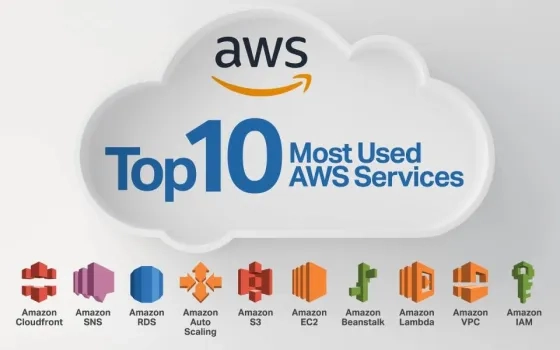The Agile development methodology, which emphasizes immensely the active involvement of clients during the development stage of the projects, is being well accepted in the software development industry. Pushing the traditional waterfall process behind, Agile methodology is being lauded for the streamlined approach it brings to a project’s development.
Agile brings a clearer picture of the development team’s requirements and development progress to the Client or the customer. The different components of Agile like scrum meetings, retrospective meetings, client calls, and estimation meetings allow a better understanding of requirements between business analysts (the proxy product owner), the Client (actual product owner), developers, and the testers.
This communication loop functions much faster in Agile than in the traditional waterfall model. Our previous blog on How Agile Development Methodology Leads to a Foolproof Delivery will explain to you more on this.
But all these advantages at the development and communication end are also coupled with some key challenges at the tester’s end. It is evident that testing is an essential aspect of software development. Being a tester of the Waterfall model, switching to Agile can be a daunting experience. But accepting that as a challenge and following different practices to handle these challenges is your way.
The new process includes sprint grooming and seizing meetings. Providing estimations on testing a story was not a regular feature in the traditional Waterfall model. Earlier it worked like this: “Give me a specification, I will review it, plan my test strategy, and then test it at the end after receiving a build from the development team.” On the contrary, in Agile, there is no large-scale specification provided. The product and its understanding will evolve during the development, and the testing approach needs to be modified regularly. This in-turn, is a big challenge for the testing team. Likewise, there are some more.
In the current blog, we will identify some of these significant challenges for you and how to overcome them to deliver your best.
-
Lack of Descriptive Requirement Specification Documents
There are no extensive documents to specify the detailed requirements, but only tiny pieces of information. These could be notes taken during short meetings or team discussions. The basic needs come from the Client through calls or any document mentioning the basic layout. Here, building a long roadmap for testing the project becomes challenging. Being a tester, you are supposed to be highly dependent on the developers to monitor every small progress/ change made in the code.
Attending the story estimation meeting gives more clarity on the complexity of the product. You need to understand the product complexity not as a tester but as a team member. Verifying the requirements gathered by the proxy product owner (business analyst) and building scenarios around it, discussing the risk factor before the development begins is the right way to handle this challenge. These steps can make the life of a tester easy. This also helps a tester take individual lessons to meet the Client’s expectations better, ultimately.
-
Unexpected Last Minute Changes In Requirements
Agile follows an incremental and iterative model. Here, the possibilities of the sudden change in requirements from the Client’s end remain too high. These unexpected and unscheduled changes may affect the overall development plan and that of the testers too. A change in requirement can be majorly due to two reasons: A. Changes made by Client as per their business needs or B. Changes made by the development team due to some complexity/limitations of the technology used. Accordingly, the old scenarios to test/verify the changing features might not be sufficient (or can eventually become invalid too). In simple words, it means a moving target from the tester’s point of view.
As a solution to this, you need to try and understand the product from the customer’s point of view (or the business’s point of view). It would be best if you considered all the possible risks and updates that you might come across. A product is always based on some existing technology. Hence, it becomes crucial for you to always keep in mind the basics of that technology. This will help you combat this challenge.
Consider the following example:
In one of our projects based on Agile Methodology, the Client wanted the content to be in French. But due to some resource crunch at the Client’s end, the translation (which we were going to receive from the Client) remained pending till the day of the release. Receiving the translation at the last moment could have delayed our implementation and led to a further testing delay.
But with proper team meetings and discussion with other team members, we came up with an idea. We created a new template for pages and emails in French without using the French language (as we had not received it yet from the Client). We simply prefixed the English content with “FR_”. For instance, for the following text in English – “Login below to access the website”, we ensured that it displayed as “FR_Login below to access the website”, each time a user opted for a language change. During testing, we made sure that whenever French content was to be displayed, it showed up with the prefix “FR_”. This helped us perform the testing promptly.
We were through with the testing and simply changed the content of the template later.

-
Limitations In Technical Skills and Automation
In Agile, the test cases need to be updated regularly because the criteria keep changing as per the client’s requirement and based on that code at the backend. So, maintaining the full coverage of test cases remains a big challenge.
Developers must perform the coding by strictly adhering to the criteria specified in the story by the Product Owner. So, understanding the requirements in the story using mutual discussions and then writing the test cases/automation scripts will always help a tester cover maximum scenarios.
-
Communication Gaps
Communication is the most important part of an Agile environment. In an environment where all the teams are working simultaneously, miscommunication can lead to an improper understanding of requirements, thereby affecting development. In the traditional Waterfall model, the Business analyst drafted the SRS, and after the development team used it to test it. So, the developers and testers to come on the same page used to be the most time-consuming part. Scrum meeting plays a vital role here. Scrum meeting is a daily activity where every team member has to report the following:
- What I did yesterday
- What will I be doing today
- What are the problems faced
Discussing this with team members will always help a tester understand what a Product Owner wants a developer to build. Based on that, a tester can plan their work (test scenarios) and even discuss the approach to test complex or technical requirements with the team.
-
The Need For Continuous Testing
In Agile, testing is not done in a single phased manner. It is an activity that starts from the beginning and continues to the end. In the earlier stage, a tester needs to develop scenarios that can be risky in the future. When stories come to testing, the tester has to verify the same. The tester has to take care of the current new behavior and ensure that the old code is not broken (a situation where old functionality stops working due to the implementation of new code).
When a feature is still under discussion in the earlier stage, the tester can work closely with the developer to understand how the feature will be implemented. This can help a tester plan the scenarios and also the behaviors that an end-user will follow. This helps the tester to create smooth test cases. You, as a tester, need to make sure that all the critical information has been shared in the acceptance criteria by a business analyst and the development team is aware of all the mentioned criteria.
-
Increased Testing Backlog With Every Release
Agile is a methodology where a software company delivers an essential workable product every 3 to 4 weeks and then improves upon the same with continuous implementation of new features. This entails multiple releases. With every new release, the scope of testing increases at the end, as all the previous released sprints are supposed to be working fine.
An automation script plays an important role here. With the completion of each sprint, you need to keep on creating and updating the automation scripts. In that way, after a new code is implemented on the old code, the execution of automation scripts will provide the stability report. It helps the tester and development team identify the areas affected by new deployment and cut down on time consumed in manual verification of the features.
Conclusion
The Agile development methodology leads to foolproof software delivery and increasingly becoming a favorite for companies that focus on client satisfaction the most. Its features like active involvement of the product owner in development cycles and flexibility in adapting to unexpected changes in the requirements (based on changing business needs) are being lauded by the clients worldwide. However, the role of software testers in such projects turns out to be highly challenging. But combating these challenges contributes heavily to the high quality of the final product delivered.
Source: Agile Testing: Overcome The Top Challenges In 6 Simple Ways



















